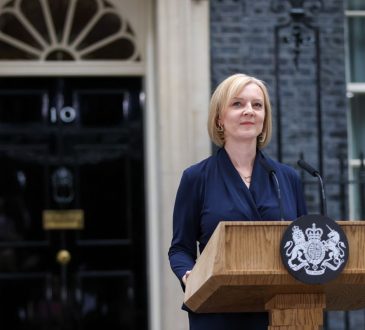
As the pandemic continues to sweep the US, Canadians are getting more and more concerned about what American visitors could be bringing with them over the border.
Built directly on the border of Blaine, Washington and Surrey, British Columbia, the Peace Arch is a 67-foot high (20 metres) testament to the close ties between Canada and the US.
Inscribed on one side are the words “May these gates never be closed”, a reminder of the nearly 8,891 km (5,525 miles) of un-militarised border that separates the two nations.
For almost 100 years, those words have been heeded – until the coronavirus pandemic effectively shut the border indefinitely.
The closure came into effect on 21 March, and was agreed upon by both governments. After being extended several times over the summer, the closure remains in effect until 21 August – although most expect the closure to be extended again.
“I never thought I’d be sitting here mid-August and that border is still closed,” says Len Saunders, a dual citizen who lives in Blaine.
“It just seems to be dragging on and on and on with no end in sight.”
While the border closure has had significant economic and personal repercussions for the millions of people that live along it or have loved ones on the other side, the vast majority of Canadians want it to stay shut.
A July poll by Ipsos Reid found that eight in ten Canadians wanted the border to stay closed until at least the end of 2020.
And as the pandemic has continued to spread across the US, so have tensions between American drivers and Canadian residents.
While non-essential travel is forbidden, commercial drivers delivering goods and people who work across the border in essential services are permitted to cross.
Before coronavirus, around 300,000 people crossed the border every day, including Canadians who routinely made daytrips to score a deal at US outlet malls or petrol stations, and American tourists exploring the wonder of Niagara Falls.
Since March, non-commercial land border crossings to Canada have dropped by nearly 95%, according to the Canadian Border Services Agency (CBSA).
“It’s going to decimate everything up there,” Mr Saunders says.
But the economic impacts of closing the border to travellers is nothing compared to what would happen to Canada if another wave of coronavirus would force a second shutdown, says Ambarish Chandra, a professor of economics at the University of Toronto.
“This travel does have a lot of economic impact on the communities where travellers go to,” he says.
“But given the pandemic in the US, and the number of cases there, it makes sense to restrict travel to the US – potentially indefinitely.”
Mr Chandra says government should provide aid to border towns whose economy relies heavily on foreign tourism, but hold steady with the border closures until the pandemic is over.
“In the long run it’s way cheaper to bail out all of Niagara Falls, Ontario, than to close down Toronto for even another three or four weeks,” he says.
After months of shuttering most businesses, Canada’s coronavirus cases are dropping and the country is in the middle of re-opening its economy. Daily cases have dropped from a high of 2,760 on 3 May to a few hundred.
BBC




